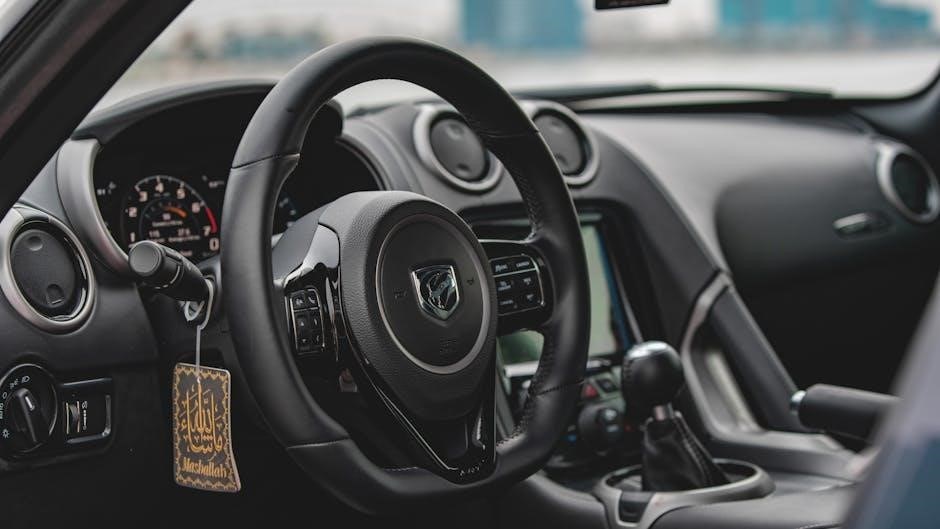manual steering
- Published
- in Manuals
Manual steering is the earliest automotive steering method, relying solely on driver effort without external power assistance․ It uses gears and linkages to control vehicle direction safely․
1․1 Definition and Historical Background
Manual steering is the earliest automotive steering method, relying solely on driver effort without external power assistance․ It uses gears and linkages to control vehicle direction safely․ Originating in the early days of automotive history, manual steering systems predate power steering and were the standard until the mid-20th century․ These systems were simple, durable, and required no additional power sources, making them ideal for early vehicles․ Their historical significance lies in their role as the foundation for modern steering technologies, including power-assisted systems․
1․2 Evolution of Manual Steering Systems
Manual steering systems have evolved significantly since their inception; Early systems were basic, with a direct connection between the steering wheel and front wheels․ Over time, gears like worm and sector, worm and roller, and rack and pinion were introduced to improve efficiency․ These advancements reduced steering effort and enhanced precision․ Modern manual systems often incorporate lightweight materials and optimized gearing for better performance, balancing simplicity with effectiveness․ Despite the rise of power steering, manual systems remain popular in niche markets, such as classic and performance vehicles, where driver feedback is prioritized․

Key Components of Manual Steering Systems
Manual steering systems consist of a steering wheel, column, rack, tie-rod ends, and ball joints․ These components work together to transmit driver input to the vehicle’s wheels․
2․1 Steering Wheel and Column
The steering wheel and column are the primary interface between the driver and the vehicle․ The steering wheel is connected to a column that houses the steering shaft, which transmits rotational motion to the gear mechanism․ In manual steering systems, the column is typically straightforward, with no power-assisted components․ The steering wheel’s design and the column’s alignment are critical for precise control and driver feedback․ This system relies on mechanical linkages to convert the driver’s input into directional movement of the vehicle’s wheels, ensuring a direct and responsive driving experience․
2․2 Gear Mechanisms
Gear mechanisms in manual steering systems transmit and amplify the driver’s input․ Common types include worm and sector, worm and roller, recirculating ball, and rack and pinion․ These gears convert rotational motion into the precise lateral movement required for steering․ Worm and sector gears are simple and compact, while worm and roller designs reduce friction․ Rack and pinion systems are widely used for their direct linear motion conversion․ These mechanisms ensure efficient energy transfer, enabling accurate vehicle control without external power assistance, relying solely on mechanical efficiency and driver effort․
2․3 Linkages and Connectors
Linkages and connectors are critical in transferring the driver’s steering input to the vehicle’s wheels․ These components include tie-rod ends, ball joints, and steering arms, which form a robust connection between the steering gear and the front axle․ The steering column links the steering wheel to the gear mechanism, ensuring precise motion transfer․ Connectors like universal joints allow flexibility in the system, accommodating varying steering angles․ Together, these elements ensure smooth, efficient translation of the driver’s input into wheel movement, maintaining vehicle stability and control during operation․
2․4 Pitman Arm and Idler Arm
The Pitman arm and idler arm are essential components in manual steering systems, providing stability and support․ The Pitman arm connects the steering gear to the steering linkage, converting rotational motion into linear movement․ The idler arm, mounted on the vehicle’s frame, stabilizes the steering linkage and prevents lateral movement․ Together, these arms ensure precise control and reduce wear on other components by maintaining proper alignment and minimizing stress on the system during steering operations․
2;5 Rack and Pinion
The rack and pinion system is a popular manual steering mechanism known for its simplicity and direct operation․ It consists of a toothed rack and a pinion gear connected to the steering wheel․ When the driver turns the wheel, the pinion rotates, moving the rack linearly to turn the wheels․ This system is widely used in modern vehicles due to its compact design and precise control․ It is also favored in lightweight cars for its efficiency and responsiveness, making it a cornerstone of manual steering technology․

Types of Manual Steering Gears
Manual steering systems utilize four primary gear types: worm and sector, worm and roller, recirculating ball, and rack and pinion, each offering distinct mechanical advantages․
3․1 Worm and Sector Steering
The worm and sector steering system is one of the earliest and simplest manual steering mechanisms․ It consists of a worm gear connected to the steering shaft and a sector gear attached to the steering linkage․ When the steering wheel is turned, the worm gear rotates, moving the sector gear and steering linkage to turn the wheels․ This system is known for its reliability and simplicity but offers limited precision and requires more driver effort compared to modern systems like rack and pinion․
3․2 Worm and Roller Steering
The worm and roller steering system enhances the worm and sector mechanism by incorporating a roller instead of a sector gear․ This design reduces friction and wear, improving durability and smooth operation․ The worm gear meshes with the roller, which is mounted on a carrier connected to the steering linkage․ This system provides better efficiency and requires less maintenance than the worm and sector type․ However, it is less common in modern vehicles, having been largely replaced by more advanced systems like recirculating ball and rack and pinion steering․
3․3 Recirculating Ball Steering
Recirculating ball steering uses a worm gear and a ball nut to convert rotational motion into linear movement․ The system incorporates recirculating balls that roll along the threads of the ball nut, reducing friction and wear․ This mechanism provides smooth and precise steering control, making it more durable and efficient than earlier worm and sector designs․ It is commonly used in heavy-duty vehicles and applications where manual steering systems are preferred for their simplicity and reliability․
3․4 Rack and Pinion Steering
Rack and pinion steering is a compact and efficient manual system where a pinion gear engages a toothed rack․ The steering wheel rotates the pinion, moving the rack linearly to turn the wheels․ This design offers precise control with minimal mechanical loss, making it ideal for low-weight vehicles․ Its simplicity and direct feedback have made it a popular choice for performance and classic cars, combining responsiveness with reliability in manual steering applications․
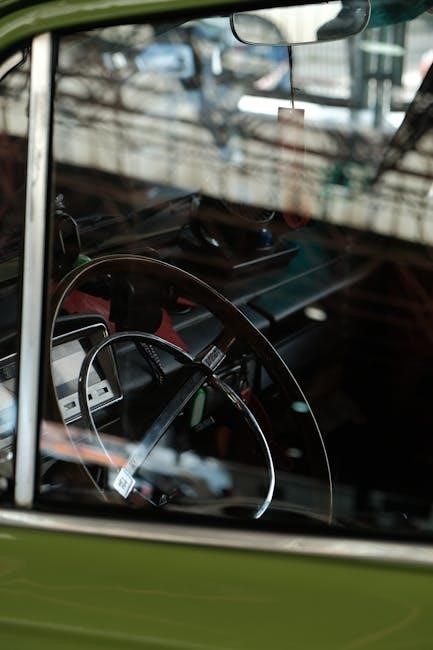
How Manual Steering Systems Work
Manual steering systems convert the driver’s rotational input into linear motion via gears and linkages, directly controlling the wheels without power assistance, ensuring precise driver control․
4․1 Driver Input and Mechanical Linkages
Driver input is transferred through the steering wheel to a column, which connects to a gear mechanism․ This mechanical linkage converts rotational motion into lateral movement, steering the wheels precisely․ The system relies on physical effort, with no power assistance, ensuring direct control and feedback․ Components like the pitman arm and idler arm transmit motion to the front wheels, maintaining a direct connection between the driver’s actions and vehicle direction․
4․2 Gear Ratios and Steering Effort
Manual steering systems rely on gear ratios to balance steering effort and responsiveness․ A higher gear ratio reduces the effort needed to turn the wheels but may compromise feedback․ Lower ratios increase effort but provide sharper, more direct control․ The gear mechanism converts the driver’s input into torque, determining how much force is required to steer․ This balance is critical for maintaining both drivability and precision, with manufacturers often optimizing ratios to suit specific vehicle types and driving conditions․
4․3 Conversion of Rotational Motion to Linear Motion
In manual steering, the rotational motion of the steering wheel is converted into linear motion through a series of mechanical components․ The steering column transfers the rotation to a gear mechanism, which then translates this motion to a lateral movement․ This is typically achieved using a rack-and-pinion system or linkages, where the rotational input is transformed into the side-to-side movement of the front wheels․ This fundamental conversion enables the vehicle to change direction precisely, with the driver’s input directly influencing the wheels’ movement without external power assistance․
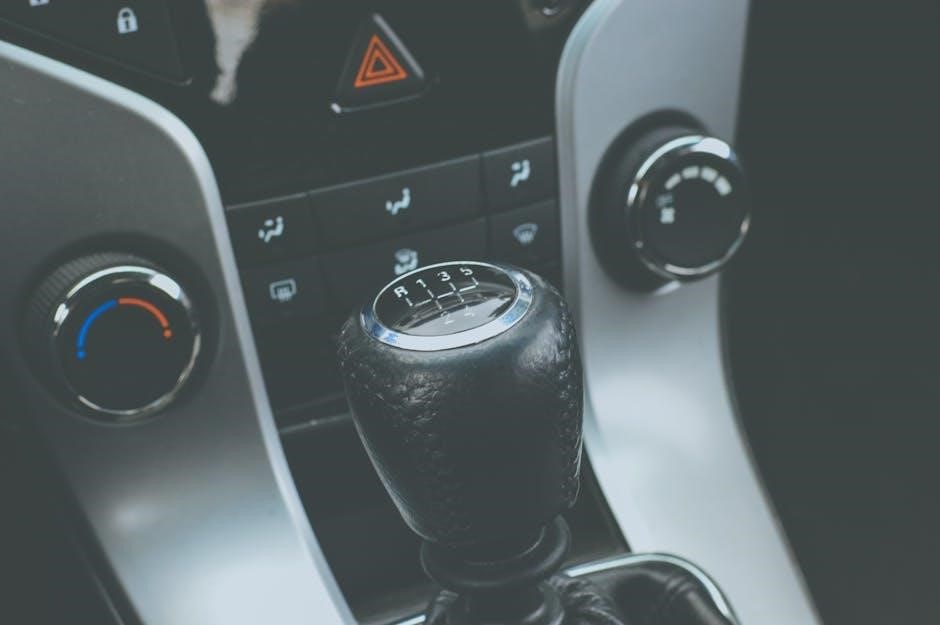
Advantages of Manual Steering
Manual steering offers better feedback and control, simplicity, and reliability․ It requires less maintenance and provides a direct connection between the driver and the road․
5․1 Better Feedback and Control
Manual steering systems provide direct feedback, allowing drivers to feel the road and vehicle response intuitively․ This connection enhances control, especially during precise maneuvers like cornering or reversing․ The absence of power assistance ensures a more authentic driving experience, making it easier for drivers to anticipate and react to road conditions․ This tactile feedback is particularly valued in performance and classic vehicles, where driver engagement is prioritized over convenience․
5․2 Simplicity and Reliability
Manual steering systems are mechanically straightforward, with fewer components compared to power-assisted systems․ This simplicity reduces the risk of mechanical failure and minimizes maintenance needs․ The lack of hydraulic or electrical components ensures reliability, especially in older or utility vehicles where durability is essential․ Their robust design makes them less prone to breakdowns, providing consistent performance over time․ This reliability is a key reason manual steering remains popular in classic cars and off-road vehicles where dependability is crucial․
5․3 Lower Maintenance Costs
Manual steering systems have fewer components and no power-assisted parts, reducing maintenance costs․ With no hydraulic fluid, pumps, or motors, there’s less risk of leaks or failures․ Routine checks and lubrication of linkages and gears are sufficient to ensure functionality․ This simplicity translates to lower repair expenses and fewer replacement parts over time․ Additionally, the absence of complex electronic systems means less diagnostic effort, making manual steering a cost-effective choice for long-term vehicle ownership․
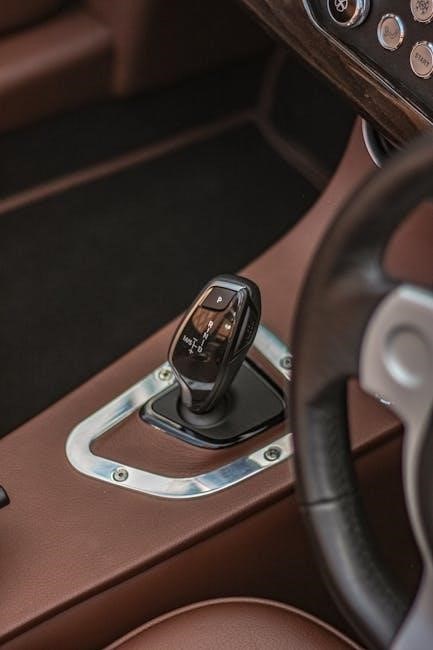
Disadvantages of Manual Steering
Manual steering requires increased driver effort, lacks assistive features, and can be less effective in modern vehicles with advanced demands, making it challenging for some drivers․
6․1 Increased Driver Effort
Manual steering requires significant physical effort from the driver, especially at low speeds or when maneuvering heavy vehicles․ The lack of power assistance demands consistent strength and precision, particularly in tight turns or parking situations․ This increased effort can lead to driver fatigue on long journeys or in stop-and-go traffic․ While it provides better feedback, the strain on the driver is a notable drawback, making it less convenient compared to power-assisted systems in modern vehicles․
6․2 Limited Assistive Features
Manual steering systems lack the assistive features of power steering, such as reduced effort during low-speed maneuvers or adaptive feedback․ This absence of assistance can make driving more challenging, especially in scenarios requiring precise control or sustained effort․ Modern drivers accustomed to power steering may find manual systems less convenient, particularly in urban environments with frequent turns or tight parking spaces․ The simplicity of manual systems, while reliable, comes at the cost of comfort and ease of use in demanding driving conditions․
6․3 Challenges in Modern Vehicles
Modern vehicles often face challenges with manual steering due to heavier weights and larger tire sizes, which increase steering effort․ The trend toward larger wheels and higher torque demands more physical input from drivers, making manual systems less practical․ Additionally, contemporary safety and driver-assistance features, like lane-keeping aids, are typically integrated with power steering, further marginalizing manual systems in new vehicles․ This shift reflects the automotive industry’s move toward convenience and technology-driven solutions, leaving manual steering systems less suited for the demands of modern driving environments and consumer expectations․
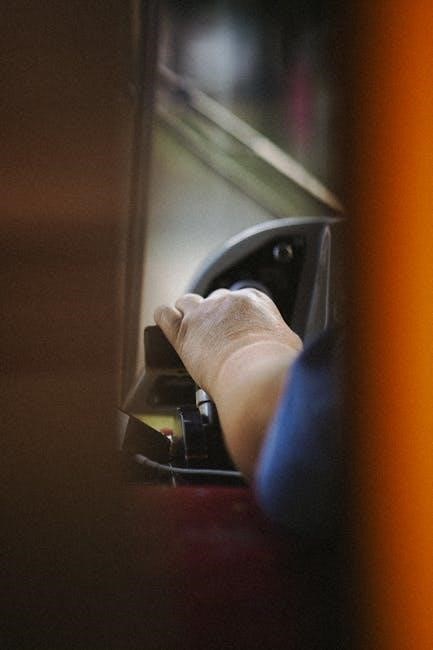
Applications of Manual Steering
Manual steering is commonly used in classic cars, performance vehicles, and off-road trucks due to its direct feedback and reliability in rugged conditions and precise control scenarios․
7․1 Classic and Vintage Vehicles
Manual steering is often preferred in classic and vintage vehicles for its simplicity and authenticity․ These systems are highly prized by enthusiasts for their direct feedback and mechanical connection to the road․ Many vintage cars, especially those built before the 1970s, feature manual steering as their original setup․ When properly maintained, these systems provide reliable performance, especially with stock-sized tires and regular use․ The resurgence in classic vehicle popularity has also driven demand for manual steering components, making them a staple in restoration projects and niche automotive markets․
7․2 Performance and Racing Cars
Manual steering remains popular in performance and racing cars due to its direct feedback and precise control․ Racers often prefer the unfiltered connection to the road, enabling quicker and more accurate maneuvers․ Drag racing and Pro Street vehicles frequently use manual steering for its responsiveness and reliability under high-performance conditions․ The lack of power assistance allows drivers to feel the car’s behavior intimately, which is crucial for competitive driving․ Additionally, some modern performance cars mimic manual steering characteristics to enhance driver engagement and handling precision, blending classic feel with contemporary technology․
7․3 Off-Road and Utility Vehicles
Manual steering systems are often favored in off-road and utility vehicles for their simplicity, reliability, and durability․ These systems excel in harsh environments where heavy-duty performance is essential․ Classic off-road vehicles, such as older Jeeps, rely on manual steering for its straightforward design and minimal maintenance requirements․ The absence of complex power-assisted components makes them less prone to failure in demanding conditions․ Additionally, manual steering provides a direct connection to the wheels, offering better feedback and control, which is crucial for navigating challenging terrains and maintaining precise vehicle handling․
7․4 Modern Vehicles with Simulated Manual Steering
Some modern vehicles incorporate simulated manual steering systems, blending the feel of classic manual steering with advanced technology․ This setup mimics the responsiveness and feedback of traditional systems while maintaining the convenience of power assistance․ For instance, the 2014 Mazda 3 was engineered to emulate manual steering characteristics, enhancing driver engagement․ These systems are particularly popular in performance-oriented cars, where precise control and authentic feedback are prioritized․ This hybrid approach ensures a balance between modern comfort and the nostalgic driving experience of manual steering․

Maintenance and Troubleshooting
Regular lubrication and inspection of components like the pitman arm and idler arm are crucial․ Hard steering may indicate worn parts or insufficient lubrication, requiring prompt attention․
8․1 Common Issues in Manual Steering
Common issues include wear and tear on components like gears, linkages, and the pitman arm․ Lack of lubrication can cause stiffness, while misalignment leads to uneven tire wear․ Driver fatigue is prevalent due to increased effort required, especially in modern vehicles accustomed to power steering․ Environmental factors, such as off-road driving, can accelerate component wear․ Regular maintenance is crucial to prevent minor problems from escalating into major repairs, ensuring optimal performance and longevity of the manual steering system․
8․2 Lubrication and Adjustment
Lubrication is vital for maintaining smooth operation in manual steering systems․ Regular application of grease to gears, linkages, and pivot points prevents friction and wear․ Proper adjustment ensures alignment and eliminates play, which can lead to premature component failure․ Over-lubrication should be avoided to prevent attracting dust and dirt; Adjustments should be made periodically to maintain optimal performance and prevent excessive steering effort․ Regular maintenance extends the lifespan of the system, ensuring reliable and precise control over the vehicle’s direction․
8․3 Replacing Wearable Components
Regular inspection of manual steering components is essential to identify wear․ Tie-rod ends, ball joints, and rack and pinion components are common wearable parts that require replacement․ Replacing these parts prevents system failure and ensures precise control․ Worn components can cause play in the steering, leading to reduced responsiveness․ When replacing, ensure parts are aligned correctly and lubricated to maintain system efficiency․ Timely replacement prevents further damage and maintains the reliability of the manual steering system, ensuring safe and consistent vehicle handling․

Comparison with Power Steering
Manual steering relies on driver effort, while power steering uses external power for assistance․ The latter reduces steering effort but may compromise feedback and control․
9․1 Differences in Mechanism
Manual steering operates through mechanical linkages, converting the driver’s input into wheel movement without external power․ Power steering, however, uses hydraulic or electric systems to assist steering effort, reducing driver input․ Manual systems rely on gears and linkages directly connected to the steering wheel, while power steering incorporates additional components like pumps or motors․ This fundamental difference in mechanism results in distinct driving experiences, with manual systems offering direct feedback and power steering providing ease of operation․
9;2 Driver Effort and Convenience
Manual steering requires physical effort from the driver, especially at low speeds, making it less convenient for everyday driving․ Power steering, with its hydraulic or electric assistance, significantly reduces the effort needed, offering greater convenience and ease of maneuverability․ Manual systems provide direct feedback, appealing to enthusiasts, while power steering enhances comfort and reduces fatigue, making it ideal for urban and long-distance driving․ The trade-off between effort and convenience is a key differentiator in choosing between these systems․
9․4 Performance and Feedback
Manual steering systems deliver precise feedback, offering drivers a direct connection to the road, which enhances control and responsiveness․ This is particularly valued in performance and racing cars where tactile feedback is crucial․ In contrast, power steering, while more convenient, can sometimes feel detached, reducing road feel․ The mechanical linkages in manual systems ensure immediate steering response, making them preferred for drivers seeking an engaging experience․ This direct connection to the vehicle’s handling makes manual steering a choice for enthusiasts prioritizing performance and driving precision over comfort․

Market Trends and Future Outlook
Manual steering systems are experiencing a resurgence in popularity, driven by demand for classic vehicles and performance cars․ The manual steering rack market is growing rapidly, supported by enthusiasts and technological advancements․
10․1 Resurgence in Classic Vehicle Popularity
The resurgence in classic vehicle popularity has reignited interest in manual steering systems․ Enthusiasts often prefer the tactile connection and mechanical feedback of manual steering, which modern power systems lack․ Classic cars, particularly those from pre-1970s eras, frequently feature manual steering, making them highly sought after by collectors and purists․ This trend has also influenced the growth of the manual steering rack market, as demand for authentic, low-maintenance systems increases․ The appeal of manual steering in vintage vehicles underscores its timeless relevance in automotive culture․
10․2 Growth of Manual Steering Rack Market
The manual steering rack market is experiencing significant growth, driven by the increasing demand for classic and performance vehicles․ The market is expected to expand at a CAGR of 11․3%, reflecting a resurgence in interest for systems that prioritize driver engagement and mechanical purity․ This growth is further supported by advancements in manufacturing technologies, ensuring reliability and efficiency․ As enthusiasts and collectors seek authentic driving experiences, the manual steering rack market continues to thrive, catering to niche segments while maintaining its relevance in modern automotive trends․
10․3 Technological Innovations in Steering Systems
Recent advancements in manual steering systems include high-precision electronic controllers that enhance steering accuracy and responsiveness․ These innovations integrate seamlessly with modern vehicle technologies, offering improved driver control and feedback․ Additionally, compatibility with RTK correction networks enables precise alignment and reduced operational costs․ Such technological upgrades ensure that manual steering systems remain competitive, blending traditional mechanical advantages with cutting-edge innovations to meet evolving automotive demands․
